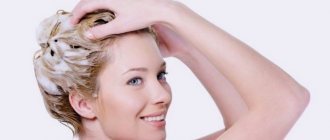Features of newborn skin
- the skin of a newborn is very thin and delicate, it is three times thinner than the skin of an adult, and its outer layer contains actually one thin layer of cells;
- it is susceptible to irritation and infection, because the ratio of the baby’s skin area to its weight is three times greater than that of an adult, and the blood supply to the skin is 1.5 times higher than that of an adult;
- water and minerals are very intensively released from the skin of a newborn baby;
- the intensity of a baby’s skin respiration is 8 times stronger than that of an adult: he literally “breathes through his skin”; however, when dirt appears on the baby’s skin, the child is deprived of this opportunity;
- infant skin is easily injured;
- the protective functions of the skin of a newborn baby are reduced due to the fact that the mechanism for producing fats in it has not yet been developed, as a result of which the sebaceous and sweat glands almost do not work;
- The baby’s skin has a very high absorption capacity, and during the inflammatory process it increases significantly; for this reason, intoxication of the newborn’s body occurs very quickly;
- The melanin content in infant skin is very low, so it is vulnerable to ultraviolet rays;
Why do newborns' skin peel?
Because due to its thin structure, a baby’s skin loses moisture very quickly and dries out even with the slightest increase in temperature. If your baby overheats (during the summer months or in a too warm room), his skin quickly becomes covered with “islands” of prickly heat - a pink rash.
A child's skin has its own characteristics.
- The relative looseness of the epidermis in children in the first months of life is combined with the thinness of the stratum corneum and the content of cells with nuclei (slight vulnerability and tendency of the skin to irritate).
- A weak (unstable) connection between the epidermis and dermis.
- Relatively low moisture (water) content and imperfect blood supply to the skin.
- Weak level of development and functioning of the sweat glands (imperfect sweating).
- Inadequate level of functioning of the sebaceous glands and a relatively high level of moisture evaporation through the thin stratum corneum of the skin.
- Lack of protection of the skin from external pathogenic microorganisms in the first weeks and months of life.
Newborn baby skin color
During the first days of life, the skin of a newborn is covered with a special vernix lubricant, similar to cottage cheese: it consists of glycogen, extractives, fat, salts, cholesterol, as well as vitamins and other substances. This layer gradually disappears as a result of drying, using clothes and diapers.
The skin color of a newborn is most often reddish with a bluish tint, while its skin is slightly swollen. You can see a small fuzz of hair on the baby's skin. And the skin of a newborn’s face on the nose and adjacent areas is covered with milia - small white-yellow pimples. After 2-3 days of life, the skin color of a newborn may acquire a yellowish tint: this is due to increased destruction of red blood cells and immaturity of liver enzymes.
Newborn baby skin care
Until the age of six months, the baby must be bathed daily, but you should not leave him in the water for a long time (more than 5-10 minutes). Immediately after bathing, it is necessary to treat the still wet skin of the baby’s face and the scalp of the newborn with special milk or oil, and only then can it be wiped with light blotting touches. The so-called products for “bathing without tears” are not a whim of modern mothers, but an important part of caring for a child’s skin, because by choosing these products, you preserve the lipid barrier in the child’s skin and protect it from serious damage. Shampoo “without tears” for the scalp of a newborn baby should be used no more than 1-2 times a week, and cream-gel should be used for daily bathing.
Expert comment:
Dermatologists try not to prescribe antiseptics, alcohols, urea, and salicylic acid to treat the baby’s skin. After all, all these substances very quickly penetrate the baby’s skin and quickly end up in the bloodstream. Infant dry skin is a normal condition that affects one third of children. Sometimes the skin contains not only peeling, but also microcracks, which are also a normal physiological condition.
Newborn skin care: why does it need special care?
Expert comment: First of all, because the skin is very delicate, and as a result of this, various dermatitis often develops on it. In addition, the condition of the child’s skin directly depends on the presence or absence of infectious diseases among parents and caregivers. The risk of infection of the baby's skin is very high, since at birth the child has wound surfaces, and their main focus is concentrated in the umbilical wound. With inadequate care of a child's skin, the pH of which is slightly acidic, its balance quickly shifts to the alkaline side.
When caring, it is necessary to pay special attention to the numerous folds on the skin of a newborn baby, especially if the baby is overweight: after all, infected diaper rash is essentially the result of poor care of the baby, untimely treatment of his skin after contact with urine and feces. Parents should remember that it is in infancy that the immune system is formed and allergic reactions occur. This includes atopic dermatitis, which begins with damage to the skin barrier.
How to properly care for your baby's skin:
- limit contact with biological fluids: feces, urine, sweat, saliva;
- to prevent diaper rash, use zinc-containing products - both under the diaper and for treating skin folds;
- use only those children's cosmetics that soothe the skin and enhance its regeneration;
- choose only hypoallergenic baby skin care products that contain components similar to physiological ones and also soothe the skin and have a mild anti-inflammatory effect;
- Children's cosmetics should be suitable for care from “zero” age.
Children's cosmetics for treatment must exclude harmful components:
- Phthalates are fragrances that dampen the unpleasant odor of the product base associated with a petroleum product. Phthalates can cause asthma, infertility, decreased testosterone concentrations in boys, and delay puberty in girls during puberty. Due to side effects, some types of phthalates are banned in the US and EU countries.
- Parabens are preservatives that prevent the development of microorganisms in cosmetics and, as a result, disrupt the skin microbiome. Parabens may have a weak estrogenic effect, penetrate the skin and accumulate in the body. Subsequently, they can cause the development of breast cancer and miscarriage.
- Surfactants (surfactants) that are responsible for the “foaminess” of shampoos and other detergents. They remove not only dirt and fats, but also the skin’s own lipid layer. These products are especially dangerous for children with atopic dermatitis, as they severely irritate the skin.
What cosmetics should you choose when caring for your baby’s skin:
- with cotton extract, which has protective, softening and nourishing properties;
- with lanolin - a wax of animal origin that preserves the lipid barrier of the skin;
- with panthenol, which restores and moisturizes the skin;
- with wheat proteins, which restore the protective barrier of dry skin in a newborn;
- with soybean oil, which promotes skin regeneration;
- with aloe vera, which stimulates and heals the skin;
- with grape seed oil - a natural antioxidant.
What exactly is needed when treating a newborn’s skin:
- massage oil with a soft and light emollient (a substance that helps soften dry skin in a newborn);
- if deeper hydration is required, a special baby cream will work well - but one that does not leave a wet film on the child’s skin (to avoid this, cotton extract and highly purified lanolin are added to high-quality creams);
- In winter, classic cold creams containing a significant amount of water in oil will help protect the dry skin of a newborn from the effects of various external factors (these creams can also treat the skin of a newborn’s face);
- care when changing a diaper involves the use of a zinc-containing and anti-inflammatory agent.
When the skin feels everything
According to recent data, every third child has sensitive skin 1, which can even react to touch. 1 Mothers of babies with sensitive skin face the difficult task of choosing care products that are safe and effective. For answers to the most frequently asked questions of mothers, we turned to a pediatrician of the highest category, the chief expert in pediatrics at the Lapino Clinical Hospital - Olga Vladislavovna Polyakova .
— My baby’s skin is delicate and soft, but it is easily irritated and red. Why is this happening?
— The skin of newborns and infants has a number of important features that determine the functional activity of this organ. The protective function of the skin is significantly reduced due to the thinness of the epidermis. It lacks 3 layers of cells, which makes it loose, prone to constant desquamation, and therefore more vulnerable. At the same time, the elastic fibers of the dermis are imperfect, so the skin of babies is not ready to “cushion” external influences.
We must not forget about one more feature of the skin of newborns. High percentage of mast cells in the skin. Mast cells are involved in the processes of allergic inflammation in the skin, releasing enzymes that damage tissue, from which any impact, such as friction from clothing or exposure to a chemical product (for example, soap, washing powder) immediately leads to pronounced consequences in the form of redness and dryness. From birth, some babies' skin may be more sensitive than others. This type of skin requires delicate care .
— What should you do when the skin becomes red and irritated?
— First of all, it is necessary to soothe the skin and relieve discomfort. But children with sensitive skin especially need to strengthen their own barrier function, so daily cleansing and moisturizing the skin should become a habit, like brushing your teeth in the morning and evening . At the same time, we need products specifically designed for very sensitive skin, so that they contain components that meet the needs of the skin.
— They say it is harmful to use bath products for babies under 3 months. This is true? And how to bathe babies with sensitive skin?
Cosmetics adapted to baby skin care . They not only do not interfere with the proper development of the child’s skin barrier, but also help strengthen it. At the same time, it is important to understand that moderation is needed in everything, and creating perfectly clean skin washes away from its surface a huge amount of important and necessary bacteria that protect our skin from external “enemies.”
— How to choose the right products for your baby so that there are no allergies?
— First of all, you need to pay attention to the composition, it should be as hypoallergenic as possible, preferably without fragrance, since it is fragrance that can provoke an allergic reaction. Often mothers believe that 100% natural composition means 100% safety. However, it is not. The presence of, for example, natural essential oils in the composition can cause allergies in a child, especially a newborn. For the first days of life, we need products designed for children from birth and taking into account their skin type. For example, for sensitive skin, the products should include ingredients that will soothe the skin, relieve redness, and moisturize well for a long time .
— What advice would you give to the mother of a baby with sensitive skin?
— A baby’s healthy skin is in many ways an indicator of his internal health. That is why all skin care products must meet its physiological needs. Correct knowledge about the characteristics of infants' skin, the choice of modern, proven and reliable products that appear to us only after serious scientific research by dermatologists, will help keep the skin healthy. Therefore, it is so necessary to determine the child’s skin type and choose the right products for daily care and hygiene.
Research by Laboratoires Expanscience, the scientific laboratories of Mustela, an expert brand in the field of baby skin care, has proven that newborns already have a predisposition to a certain skin type and each type has its own individual characteristics1.
1. Very sensitive skin that reacts to more than two irritants. The assessment was based on an epidemiological study of children's skin reactivity conducted in 2007 in France, Spain, Mexico, and Taiwan with the participation of more than 8,000 newborns and children aged 0-5 years under the supervision of pediatricians. Other studies are available upon request.
Manufacturer: LABORATOIRES EXPANSCIENCE, 1 Place des Saisons 92048 Paris la Defense CEDEX, France, France. Importer and organization authorized to accept claims regarding products: LLC LABORATUAR EXPANSION OF RUSI, 109028, Russia, Moscow, Podkopaevsky per., 4, room XII. E-mail: [email protected] , website: www.mustela.ru LABORATORY EXPANSION, 1 Place de Sason 92048 Paris la Défense CEDEX, France











